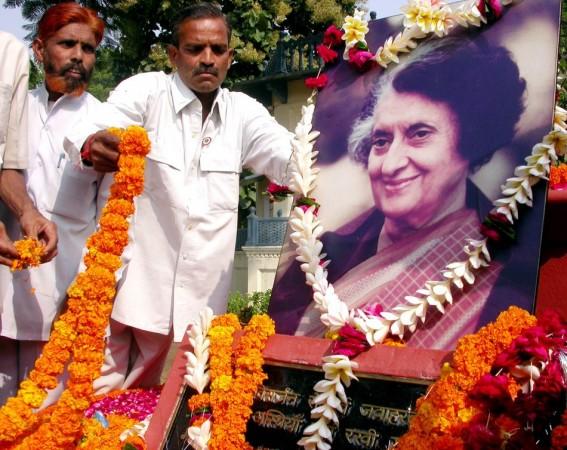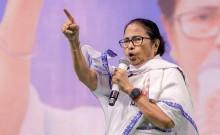
After getting independence from the colonial rule of British Raj in 1947, India has experienced both merits and drawbacks of democracy in its six-and-a-half decades. The country has learnt lessons when ministers and leaders in the government indulged in money-making, instead of concentrating on people's welfare.
In the recent Lok Sabha elections, India voted the BJP-led NDA to power. The people have given a mandate of 282-seat majority to the single party BJP, headed by Narendra Modi, who became the 15th Prime Minister of India on Monday.
So here is a glimpse into the 14 previous PMs of India - starting from the first Prime Minister Jawaharlal Nehru, who served the nation for more than 16 years. After Nehru, his daughter Indira Gandhi was the longest-serving PM of India.
Jawaharlal Nehru: Nehru became the first PM of India on 15 August 1947 and died in office on 27 May 1964. As the first PM, he enjoyed an iconic status both at home and the world over, throughout his life and left an imprint on the nation. Nehru shaped India's future with his foresighted plans for key sectors, like industries and agriculture.
Gulzarilal Nanda: Gulzarilal Nanda was the acting PM twice for 26 days; first when Nehru died (for 13 days) and again when Lal Bahadur Shastri died on 11 January 1966 (13 days). Both tenures were mourning periods for Nehru and Shastri. Nanda became the acting PM on account of him being the senior most minister in the cabinet. The 26 days he acted as PM were considered crucial as India had just faced wars against its neighbours - China and Pakistan.
Lal Bahadur Shastri: Shastri was in office for only one year and 216 days - from 9 June 1964 to 11 January 1966 - till his death. He died in Tashkent after signing the Tashkent Declaration with Pakistan, reportedly due to a heart attack. Shastri became a national hero when India won the Indo-Pak war of 1965. The slogan "Jai Jawan Jai Kisan" became popular during that time.
Indira Gandhi: Indira Gandhi was the first and last woman Prime Minister of India. She was the second longest-serving PM (11 years) after her father Nehru. Indira's tenure was an eventful period. A war was fought with Pakistan in support of the movement for independence by East Pakistan, which became Bangladesh after winning the war. Indira declared emergency in the country from 1975 to 1977, and several leaders like Atal Bihari Vajpayee and LK Advani, who opposed it, were put behind the bards. Indira was named as "Woman of the Millennium" by BBC after conducting a poll in 1999.
Morarji Desai: Morarji Desai was the first PM from a non-Congress party. He was in power for two years and 126 days (from 24 March 1977 to 28 July 1979). Desai strived to establish peace between the South Asian countries. Recognising this, Pakistan honoured him with its highest civilian award, Nishan-e-Pakistan.
Charan Singh: Charan Singh was the PM for 170 days (from 28 July 1979 to 14 January 1980). He is remembered for his opposition to Nehru's socialistic and land use policies. Charan particularly fought for farmers' cause.
Rajiv Gandhi: Rajiv Gandhi was the third from the Gandhi-Nehru family to become India's Prime Minister (from 31 October 1984 to 2 December 1989). Rajiv served in the post for five years and 32 days. Like his mother Indira, Rajiv was also assassinated - on 21 May 1991. It was established that the LTTE in Sri Lanka killed him during an election rally near Chennai, for stating that he would send the Indian Peace Keeping Force to wipe out the separatist anti-state force. Rajiv gave impetus for science and technology in both education and industrial sectors.
VP Singh: VP Singh was the PM for 343 days, from 2 December 1989 to 10 November 1990. National Front coalition made him the PM. He is noted for advocating the implementation of Mandal Commission, which suggests a fixed quota of jobs in public sector undertakings (PSUs) for other backward classes (OBCs).
Chandra Shekhar Singh: Chandra Shekhar of the Samajwadi Janata Party was Prime Minister for 223 days, from 10 November 1990 to 21 June 1991. Amid typical circumstances, Chandra Sekhar proved himself efficient and ran the government well during his brief tenure.
PV Narasimha Rao: Considered very loyal to Indira, Narasimha Rao became the ninth Prime Minister of India, and was in the office between 21 June 1991 and 16 May 1996. Rao saved India from the bankruptcy by liberalizing the country's economic policies, and opening up trade to the outer world. He was a multi-faceted personality. Rao completed his tenure, which was an eventful one and included the demolition of Babri Masjid.
Atal Bihari Vajpayee: Vajpayee, who is still considered as the secular face of Bharatiya Janata Party (BJP) was in office for six years and 64 days. He was the only PM, outside the Congress party, to serve the full five-year tenure. Vajpayee is remembered for launching welfare schemes, such National Highway Development Project and Pradhan Mantri Gram Sadak Yojana. Now he is spending an apolitical life.
Deve Gowda: Deve Gowda was PM for 324 days, between 1996 and 1997. The United Front coalition made him the Prime Minister. Though considered as a farmer leader, Gowda proved his business acumen when he toured Singapore and Switzerland, which brought the much-essential foreign investment to India.
IK Gujral: Inder Kumar Gujral was in power for 332 days, between 21 April 1997 and 19 March 1998. Gujral was the third PM from the Rajya Sabha - the first was Indira and the second was Gowda.
Manmohan Singh: The outgoing Prime Minister (on 26 May 2014) completed a record 10 years and four days as the PM of India, till Modi led the BJP to power in the recent election. An acclaimed economist, Manmohan is widely believed to have become a puppet in the hands of Congress president Sonia Gandhi. Manmohan is the first PM after Jawaharlal Nehru to be re-elected for a second term. He is the third longest serving Prime Minister of India.

















